Alexis Conneau
Tony
GPT-4o System Card
Oct 25, 2024Abstract:GPT-4o is an autoregressive omni model that accepts as input any combination of text, audio, image, and video, and generates any combination of text, audio, and image outputs. It's trained end-to-end across text, vision, and audio, meaning all inputs and outputs are processed by the same neural network. GPT-4o can respond to audio inputs in as little as 232 milliseconds, with an average of 320 milliseconds, which is similar to human response time in conversation. It matches GPT-4 Turbo performance on text in English and code, with significant improvement on text in non-English languages, while also being much faster and 50\% cheaper in the API. GPT-4o is especially better at vision and audio understanding compared to existing models. In line with our commitment to building AI safely and consistent with our voluntary commitments to the White House, we are sharing the GPT-4o System Card, which includes our Preparedness Framework evaluations. In this System Card, we provide a detailed look at GPT-4o's capabilities, limitations, and safety evaluations across multiple categories, focusing on speech-to-speech while also evaluating text and image capabilities, and measures we've implemented to ensure the model is safe and aligned. We also include third-party assessments on dangerous capabilities, as well as discussion of potential societal impacts of GPT-4o's text and vision capabilities.
Toward Joint Language Modeling for Speech Units and Text
Oct 12, 2023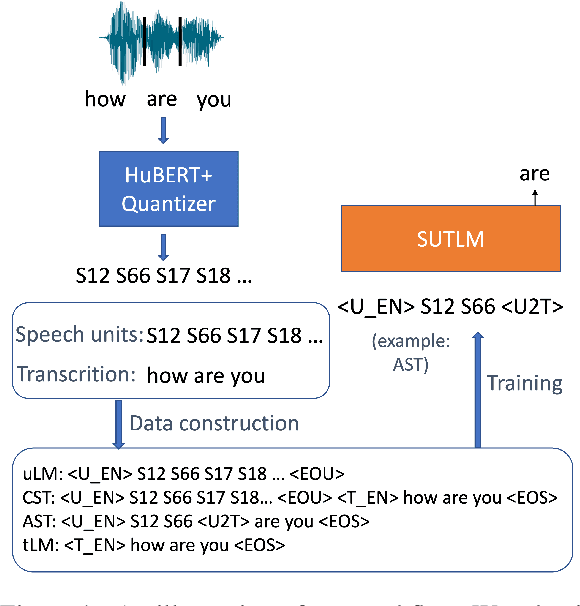

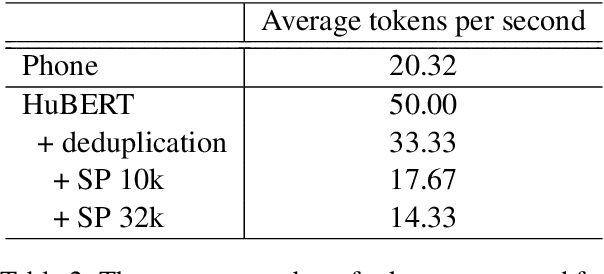

Abstract:Speech and text are two major forms of human language. The research community has been focusing on mapping speech to text or vice versa for many years. However, in the field of language modeling, very little effort has been made to model them jointly. In light of this, we explore joint language modeling for speech units and text. Specifically, we compare different speech tokenizers to transform continuous speech signals into discrete units and use different methods to construct mixed speech-text data. We introduce automatic metrics to evaluate how well the joint LM mixes speech and text. We also fine-tune the LM on downstream spoken language understanding (SLU) tasks with different modalities (speech or text) and test its performance to assess the model's learning of shared representations. Our results show that by mixing speech units and text with our proposed mixing techniques, the joint LM improves over a speech-only baseline on SLU tasks and shows zero-shot cross-modal transferability.
Scaling Speech Technology to 1,000+ Languages
May 22, 2023Abstract:Expanding the language coverage of speech technology has the potential to improve access to information for many more people. However, current speech technology is restricted to about one hundred languages which is a small fraction of the over 7,000 languages spoken around the world. The Massively Multilingual Speech (MMS) project increases the number of supported languages by 10-40x, depending on the task. The main ingredients are a new dataset based on readings of publicly available religious texts and effectively leveraging self-supervised learning. We built pre-trained wav2vec 2.0 models covering 1,406 languages, a single multilingual automatic speech recognition model for 1,107 languages, speech synthesis models for the same number of languages, as well as a language identification model for 4,017 languages. Experiments show that our multilingual speech recognition model more than halves the word error rate of Whisper on 54 languages of the FLEURS benchmark while being trained on a small fraction of the labeled data.
Textually Pretrained Speech Language Models
May 22, 2023



Abstract:Speech language models (SpeechLMs) process and generate acoustic data only, without textual supervision. In this work, we propose TWIST, a method for training SpeechLMs using a warm-start from a pretrained textual language models. We show using both automatic and human evaluations that TWIST outperforms a cold-start SpeechLM across the board. We empirically analyze the effect of different model design choices such as the speech tokenizer, the pretrained textual model, and the dataset size. We find that model and dataset scale both play an important role in constructing better-performing SpeechLMs. Based on our observations, we present the largest (to the best of our knowledge) SpeechLM both in terms of number of parameters and training data. We additionally introduce two spoken versions of the StoryCloze textual benchmark to further improve model evaluation and advance future research in the field. Speech samples can be found on our website: https://pages.cs.huji.ac.il/adiyoss-lab/twist/ .
Scaling Laws for Generative Mixed-Modal Language Models
Jan 10, 2023Abstract:Generative language models define distributions over sequences of tokens that can represent essentially any combination of data modalities (e.g., any permutation of image tokens from VQ-VAEs, speech tokens from HuBERT, BPE tokens for language or code, and so on). To better understand the scaling properties of such mixed-modal models, we conducted over 250 experiments using seven different modalities and model sizes ranging from 8 million to 30 billion, trained on 5-100 billion tokens. We report new mixed-modal scaling laws that unify the contributions of individual modalities and the interactions between them. Specifically, we explicitly model the optimal synergy and competition due to data and model size as an additive term to previous uni-modal scaling laws. We also find four empirical phenomena observed during the training, such as emergent coordinate-ascent style training that naturally alternates between modalities, guidelines for selecting critical hyper-parameters, and connections between mixed-modal competition and training stability. Finally, we test our scaling law by training a 30B speech-text model, which significantly outperforms the corresponding unimodal models. Overall, our research provides valuable insights into the design and training of mixed-modal generative models, an important new class of unified models that have unique distributional properties.
FLEURS: Few-shot Learning Evaluation of Universal Representations of Speech
May 25, 2022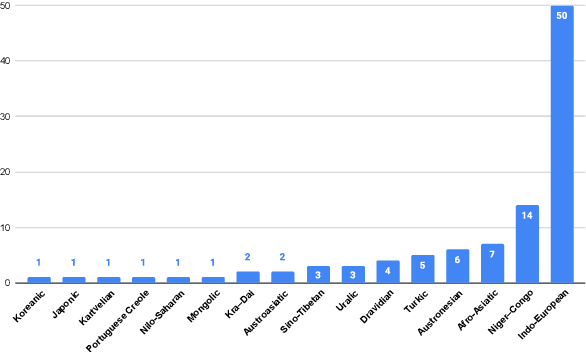

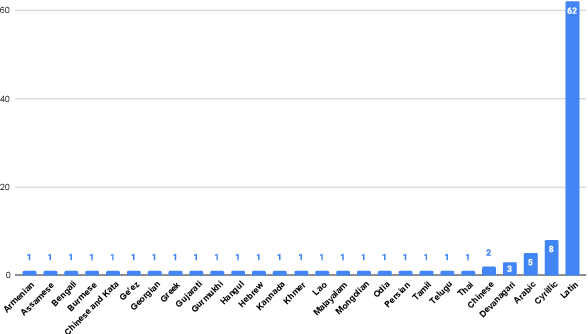

Abstract:We introduce FLEURS, the Few-shot Learning Evaluation of Universal Representations of Speech benchmark. FLEURS is an n-way parallel speech dataset in 102 languages built on top of the machine translation FLoRes-101 benchmark, with approximately 12 hours of speech supervision per language. FLEURS can be used for a variety of speech tasks, including Automatic Speech Recognition (ASR), Speech Language Identification (Speech LangID), Translation and Retrieval. In this paper, we provide baselines for the tasks based on multilingual pre-trained models like mSLAM. The goal of FLEURS is to enable speech technology in more languages and catalyze research in low-resource speech understanding.
XTREME-S: Evaluating Cross-lingual Speech Representations
Apr 13, 2022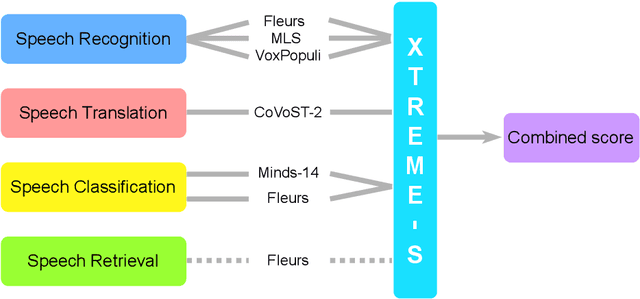


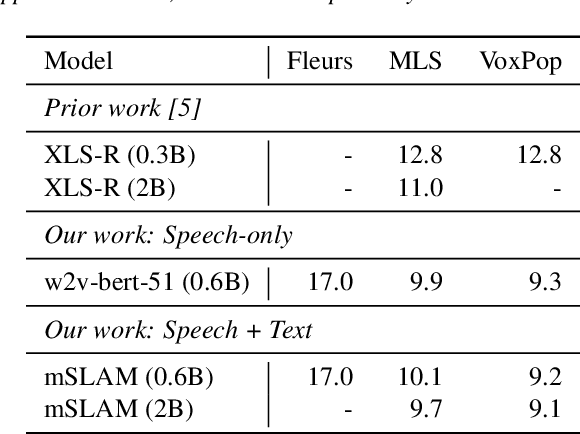
Abstract:We introduce XTREME-S, a new benchmark to evaluate universal cross-lingual speech representations in many languages. XTREME-S covers four task families: speech recognition, classification, speech-to-text translation and retrieval. Covering 102 languages from 10+ language families, 3 different domains and 4 task families, XTREME-S aims to simplify multilingual speech representation evaluation, as well as catalyze research in "universal" speech representation learning. This paper describes the new benchmark and establishes the first speech-only and speech-text baselines using XLS-R and mSLAM on all downstream tasks. We motivate the design choices and detail how to use the benchmark. Datasets and fine-tuning scripts are made easily accessible at https://hf.co/datasets/google/xtreme_s.
Leveraging unsupervised and weakly-supervised data to improve direct speech-to-speech translation
Mar 24, 2022
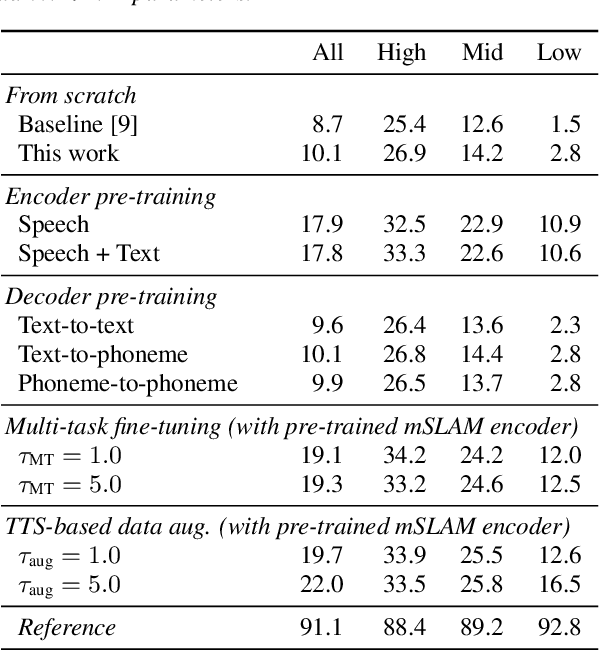
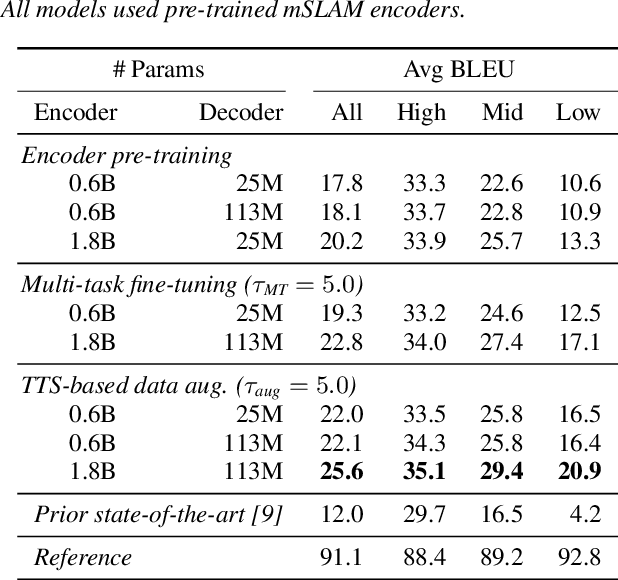
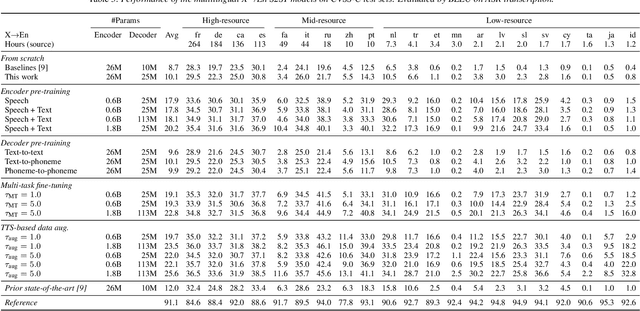
Abstract:End-to-end speech-to-speech translation (S2ST) without relying on intermediate text representations is a rapidly emerging frontier of research. Recent works have demonstrated that the performance of such direct S2ST systems is approaching that of conventional cascade S2ST when trained on comparable datasets. However, in practice, the performance of direct S2ST is bounded by the availability of paired S2ST training data. In this work, we explore multiple approaches for leveraging much more widely available unsupervised and weakly-supervised speech and text data to improve the performance of direct S2ST based on Translatotron 2. With our most effective approaches, the average translation quality of direct S2ST on 21 language pairs on the CVSS-C corpus is improved by +13.6 BLEU (or +113% relatively), as compared to the previous state-of-the-art trained without additional data. The improvements on low-resource language are even more significant (+398% relatively on average). Our comparative studies suggest future research directions for S2ST and speech representation learning.
mSLAM: Massively multilingual joint pre-training for speech and text
Feb 03, 2022Abstract:We present mSLAM, a multilingual Speech and LAnguage Model that learns cross-lingual cross-modal representations of speech and text by pre-training jointly on large amounts of unlabeled speech and text in multiple languages. mSLAM combines w2v-BERT pre-training on speech with SpanBERT pre-training on character-level text, along with Connectionist Temporal Classification (CTC) losses on paired speech and transcript data, to learn a single model capable of learning from and representing both speech and text signals in a shared representation space. We evaluate mSLAM on several downstream speech understanding tasks and find that joint pre-training with text improves quality on speech translation, speech intent classification and speech language-ID while being competitive on multilingual ASR, when compared against speech-only pre-training. Our speech translation model demonstrates zero-shot text translation without seeing any text translation data, providing evidence for cross-modal alignment of representations. mSLAM also benefits from multi-modal fine-tuning, further improving the quality of speech translation by directly leveraging text translation data during the fine-tuning process. Our empirical analysis highlights several opportunities and challenges arising from large-scale multimodal pre-training, suggesting directions for future research.
XLS-R: Self-supervised Cross-lingual Speech Representation Learning at Scale
Nov 19, 2021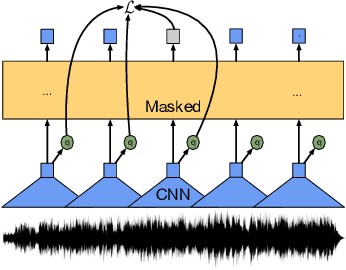
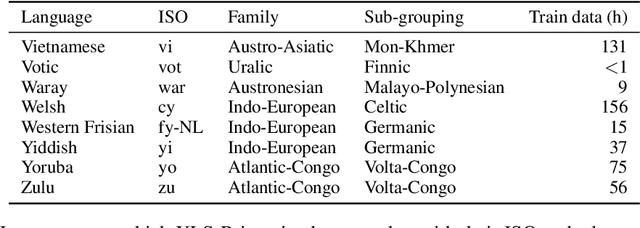
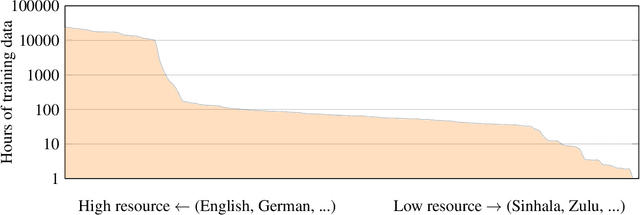

Abstract:This paper presents XLS-R, a large-scale model for cross-lingual speech representation learning based on wav2vec 2.0. We train models with up to 2B parameters on nearly half a million hours of publicly available speech audio in 128 languages, an order of magnitude more public data than the largest known prior work. Our evaluation covers a wide range of tasks, domains, data regimes and languages, both high and low-resource. On the CoVoST-2 speech translation benchmark, we improve the previous state of the art by an average of 7.4 BLEU over 21 translation directions into English. For speech recognition, XLS-R improves over the best known prior work on BABEL, MLS, CommonVoice as well as VoxPopuli, lowering error rates by 14-34% relative on average. XLS-R also sets a new state of the art on VoxLingua107 language identification. Moreover, we show that with sufficient model size, cross-lingual pretraining can outperform English-only pretraining when translating English speech into other languages, a setting which favors monolingual pretraining. We hope XLS-R can help to improve speech processing tasks for many more languages of the world.
 Add to Chrome
Add to Chrome Add to Firefox
Add to Firefox Add to Edge
Add to Edge